Aluminum is an excellent material in wind power projects, with low density, high hardness, strong resistance to seawater corrosion, no daily maintenance required, high cost-effectiveness, and all aluminum components and profiles can be recycled and reused.
Specifications of Aluminum Profiles for Wind Turbines
- Alloy/Materials: 5083, 6061, 6063, 6082, 7075, Carbon Fiber Reinforced Aluminum Composite Material (Aluminum Content 60%-90%)
- Temper:T3-T8
- Popular Products: Aluminum tube, aluminum bar, angle aluminum, U-shaped groove, H-shaped profile, heat sink profile, aluminum wire
- Surface Treatment: Painting, anodizing, electrophoresis, wood grain, polishing, etc.
- Shapes: Square, round, flat, oval (can be customized according to customer drawings)
- Standards: IEC 61400, EN 50308, SS-EN 61400, ASTM B221, EN 755-2, ISO 19901-1
- Certifications: NR 445, DNV GL, Lloyd's Register, UL 6141, TÜV, CE
- Packaging: Profiles are protected with pearl cotton, wrapped with shrink film or kraft paper on the outside. (Can be packaged according to customer requirements)
Where are aluminum profiles used in wind turbine generators?
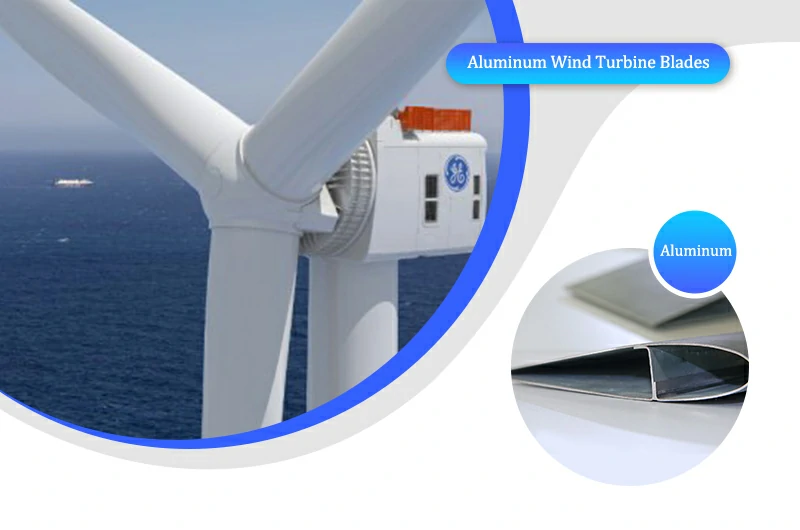
Aluminum Wind Turbine Blades
The blades are located at the top of the turbine and can reach lengths of 260-290 feet (80-90 m). Aluminum profiles are widely used in blade manufacturing due to their unique advantages, especially in Vertical Axis Wind Turbines (VAWTs).
- Alloy/Materials: 5083, 6061, 7075, Carbon Fiber Reinforced Aluminum Composite Material (Aluminum Content 60%-90%)
- Advantages of Aluminum Profiles: Lightweight, high strength, good corrosion resistance, UV resistance, and high weather resistance.
- High Return on Investment: Long service life, low frequency of routine checks and maintenance, recyclable.
- Production and Installation: Aluminum profiles can produce complex-shaped blades, and their lightweight nature also reduces transportation and installation difficulties.
Nacelle
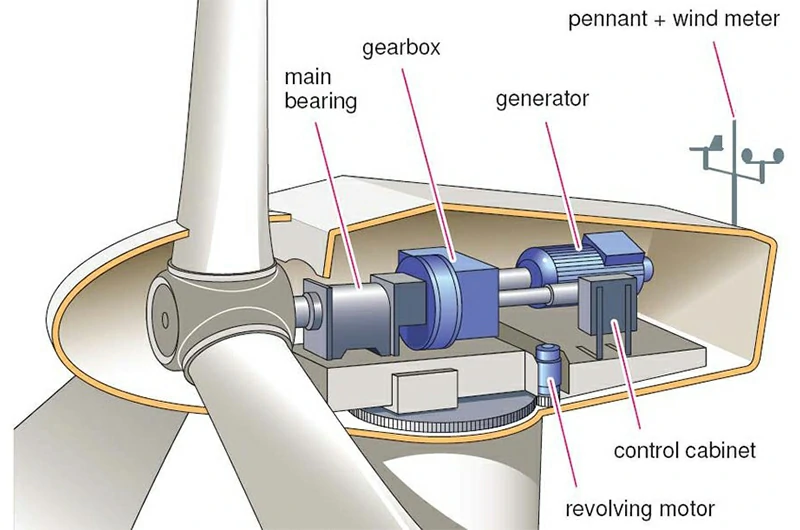
Aluminum profiles are commonly used for the casing and support structures of internal components in the nacelle, helping to reduce the load on rotating parts and improve efficiency and lifespan.
- Aluminum Profile Applications: Rotor shaft, gearbox, generator, inverter casing, heat sink, hydraulic manifolds, rigid conduits.
- Aluminum Profile Alloys: 1050, 5052, 6061, 6063
- Advantages of Aluminum Profiles: High mechanical strength, good fatigue resistance, high heat dissipation efficiency, lightweight.
Hub
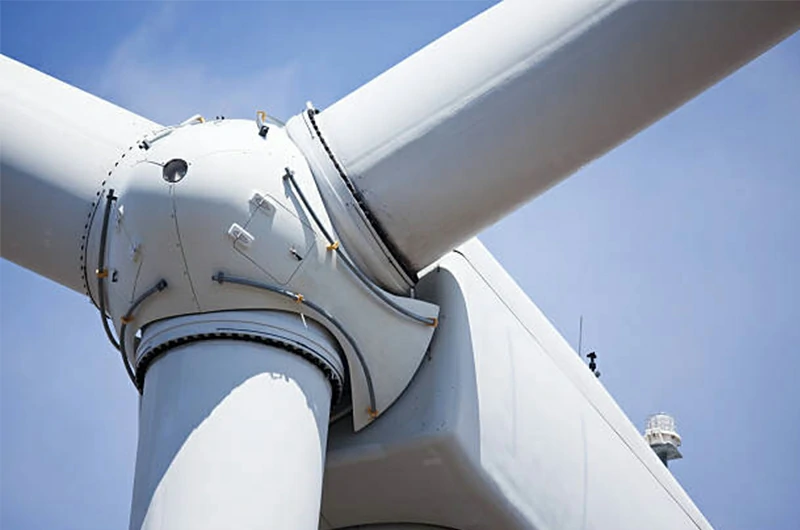
The hub is a crucial component of wind turbines, bearing loads from the blades and transmitting them to the main shaft in the rear nacelle.
- Alloys: 6061, 7075
- High Strength: 7075 aluminum profiles have extremely high strength and excellent fatigue resistance, suitable for high-stress components in hubs.
- Lightweight and Easy to Process: 6061 aluminum profiles have good processing properties, suitable for structural components of hubs.
Pillar and Mast
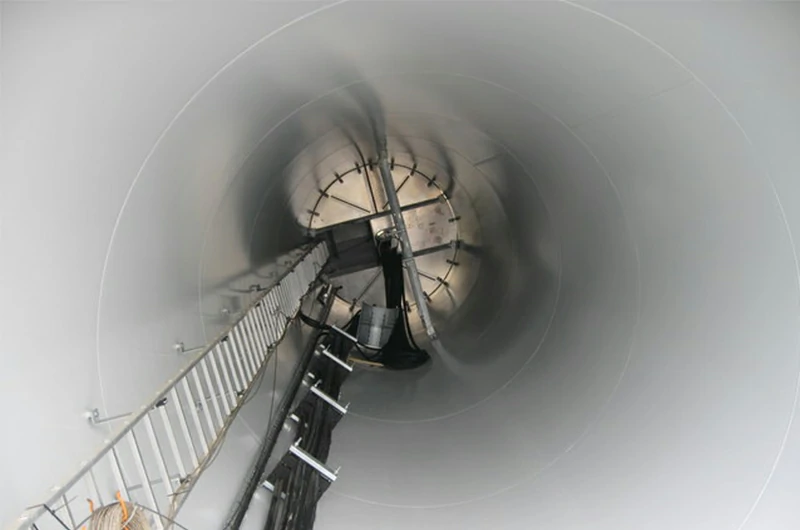
The pillar of a wind turbine is made of 6-series aluminum alloy variable diameter pipes, welded by spiral welding or friction stir welding. The mast contains a ladder and handrails inside, made of 6061, 6063, or 6082 aluminum profiles. For household wind turbines with masts of 5-12m, a single aluminum tube can also be extruded to manufacture them.
- Alloys: 6061, 6063, 6082
- Lightweight: The density of aluminum alloys is about 1/3 that of steel, reducing transportation and installation costs.
- Good Corrosion Resistance: Aluminum alloys have excellent corrosion resistance, making them suitable for marine applications.
- Recyclability: Aluminum alloys are recyclable materials, reducing environmental impact.
Aluminum conductors and aluminum busbars
Aluminum conductors are an ideal choice for the transmission system of wind turbines, thanks to their advantages such as lightweight, corrosion resistance, high conductivity, durability, reliability, and recyclability.
- Durability: Aluminum exhibits certain corrosion resistance and oxidation resistance, enabling it to withstand strong winds, temperature fluctuations, and extreme weather conditions.
- Recyclability: Aluminum is highly recyclable, and choosing aluminum bare conductors can reduce the carbon footprint.
- Cost-effectiveness: Aluminum has strong conductivity and is cheaper than copper. Therefore, it lowers the overall project cost.
The application of wind turbines in wind power generation
- Onshore wind farm
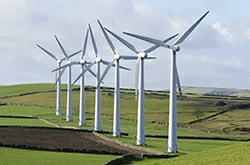
Compared to offshore wind farms, onshore wind farms have lower construction and maintenance costs.
- Offshore wind farm
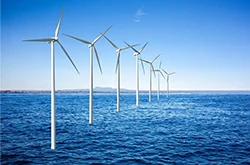
The corrosion resistance of aluminum alloys makes them ideal for use in marine environments.
- Small household wind power system

Distributed wind power system: suitable for small and medium-sized wind power projects.
According to the orientation of the turbine axis, wind turbines can also be divided into Horizontal Axis Wind Turbine (HAWT) and Vertical Axis Wind Turbine (VAWT). Quick Quote
Why choose Mastar aluminum profiles?
Mastar can provide large and complex aluminum profiles made through spiral welding or friction stir welding.
Mastar can pre-assemble thousands of components in wind turbines into entire containers, making it convenient for you to pick up and install.
Mastar offers one-stop services such as customization, milling, anodizing, powder coating, CNC machining, cutting, pre-assembly, etc.
Mastar has ample inventory and diverse mold sizes.
Mastar offers competitive prices, bulk product discounts, and offers.
Mastar provides customers with the most suitable logistics solutions, such as matching and expedited services, ensuring precise and fast delivery.
Why is aluminum alloy gradually replacing steel in the field of wind power generation?
| Property | Alloy | Steel | Carbon fiber |
| Mechanical stability | Excellent | Excellent | Good |
| Damping | Good | Average | Excellent |
| Thermal Management | Excellent | Average | Excellent |
| reduce weight | Excellent | Average | Excellent |
| Durability | Excellent | Excellent | Good |
| Corrosion resistance | Excellent | Good | Excellent |
| cost | Good | Excellent | Average |
| Recyclability | Excellent | Good | Average |
An actual case of using aluminum profiles in wind turbine generators
China's Jinwan Offshore Wind Farm in Zhuhai, located in the Greater Bay Area of Guangdong, Hong Kong, and Macau, is the largest offshore wind farm in the region with a capacity of 300,000 kilowatts. The blades, tower structures, and connectors are all made of aluminum alloy. Apart from some electrical wires and cables that must use copper wire, the rest are made of aluminum wire.
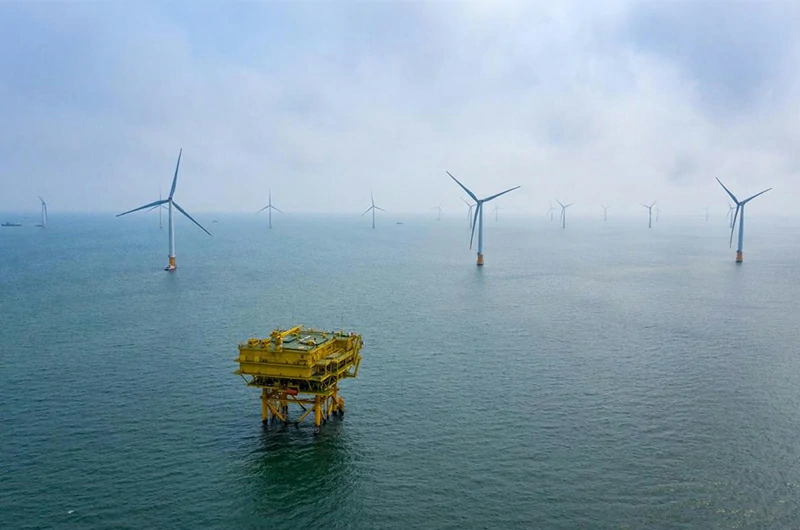
In addition to offshore wind power, there are also wind farms on the grasslands north of Zhangjiakou City. Many components such as rotating blades, pillars, workbenches, and cabinets are made of aluminum materials.
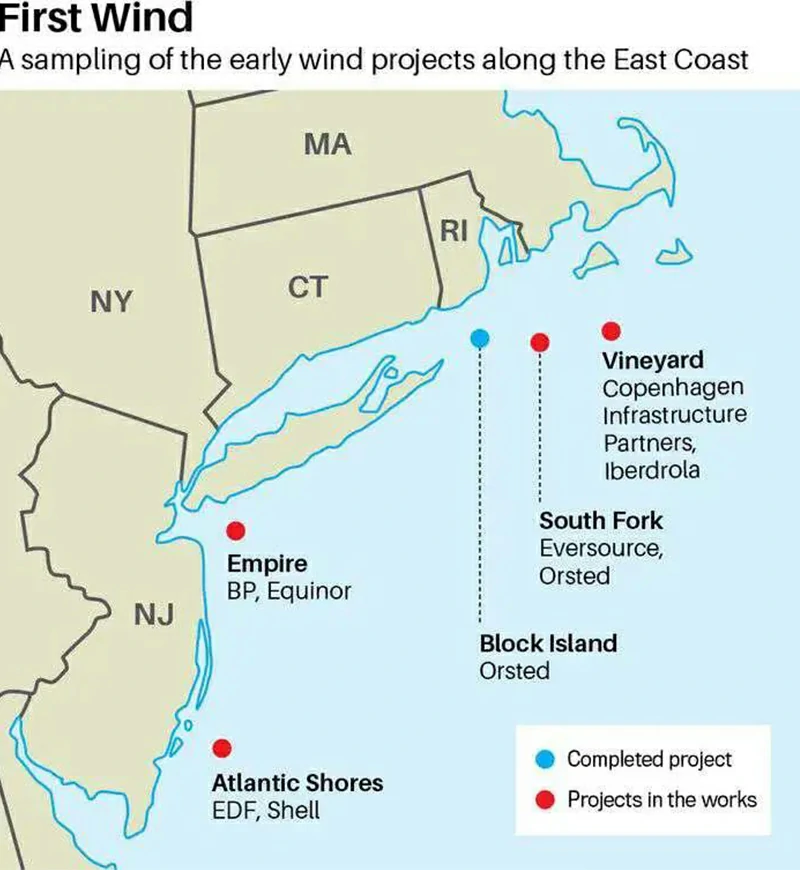
To improve the corrosion resistance, lightweight characteristics, and long-term stability of the structures, wind farms in Rhode Island and Virginia also use aluminum materials for components such as blades, tower sections, hubs, and connecting parts.
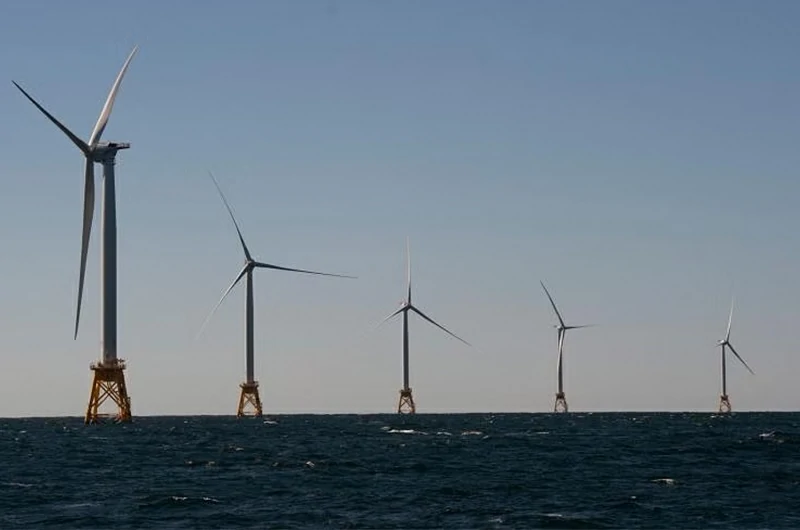
Sweden, as a leader in offshore wind power, extensively uses aluminum materials in projects like the Markbygden Wind Farm, Göteborg Energi Wind Power Project, and Jädraås-Tallåsen Project. This reflects the widespread application and unique advantages of aluminum alloys in the field of wind power generation.


